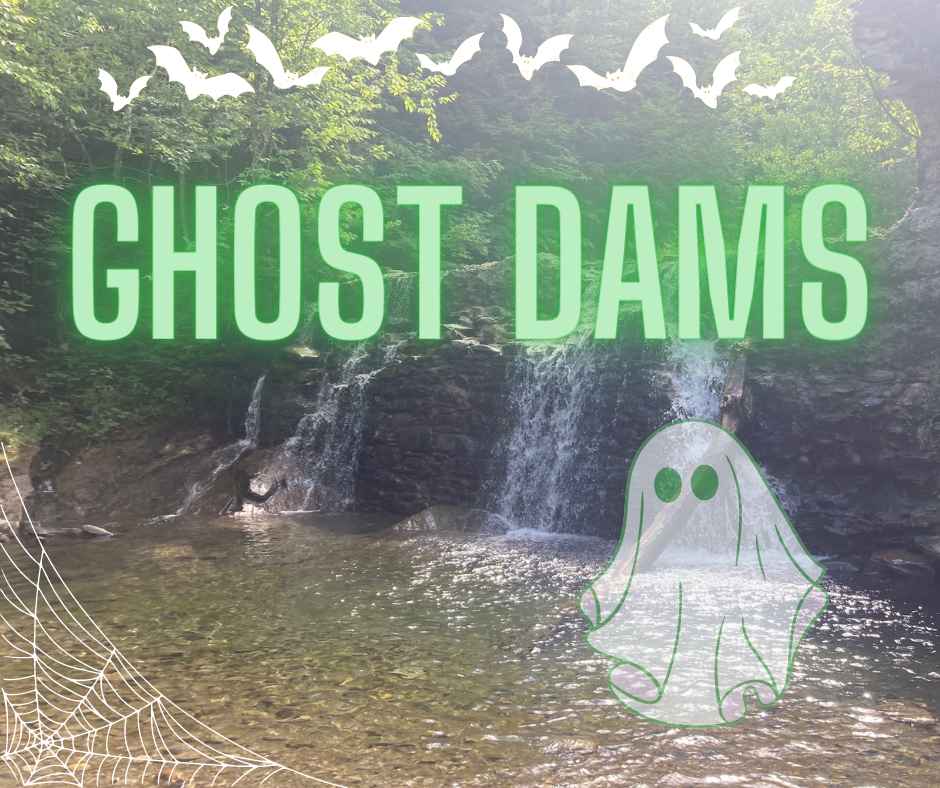Have you ever heard of a Ghost Dam? Sounds spooky, doesn’t it.
A ghost dam is a dam that has not been identified by the larger community, and is perhaps only known to a landowner, or select community members. But if a dam is not known, it will be missed for safety and environmental inspections. Dams need to be inspected to determine the effects the dam is having on a river system, and to make sure they are not a hazard to the people that live near them. Human-made dams create an unnatural barrier within a river, blocking water flow, natural sediment transport, and the passage of fish and other animals from swimming up or down the river. Identifying and mapping dams allows us to understand the conditions that a river is facing, and the ways we might help reconnect the river to restore the natural conditions of the stream.

Do you know how to spot a ghost dam?
Dams aren’t always obvious! They could be made of concrete, stones, logs, dirt, or a road. If you see a body of water, try to find out what is holding the water back. You might canoe or walk along the edge of a bank, or look for culverts (sometimes dams and culverts work hand- in -hand). On a river you might look for any structures in the water, or a cascade of water falling over a ledge. Remember to wear a life jacket.
You will only know if a dam is a ghost dam if it is absent from dam inventory resources like The Nature Conservancy Dam Screening Tool or The Vermont Agency of Natural Resources Atlas (Vermont Dam Inventory) or the Free Vermont Rivers Dam Mapper. If you find a dam, you can check the location against one of these maps. If the dam does not appear, you’ve found a ghost dam!
VNRC is trying to find as many ghost dams as possible, so let us know if you find one. Take a picture and send it and the location to Mary Perchlik at mperchlik@vnrc.org. The first person to send in a photo of a true ghost dam gets a little bag of goodies, in our Clean Water is a Human Right tote bag.
‘Tis the season for…ghost dams!




